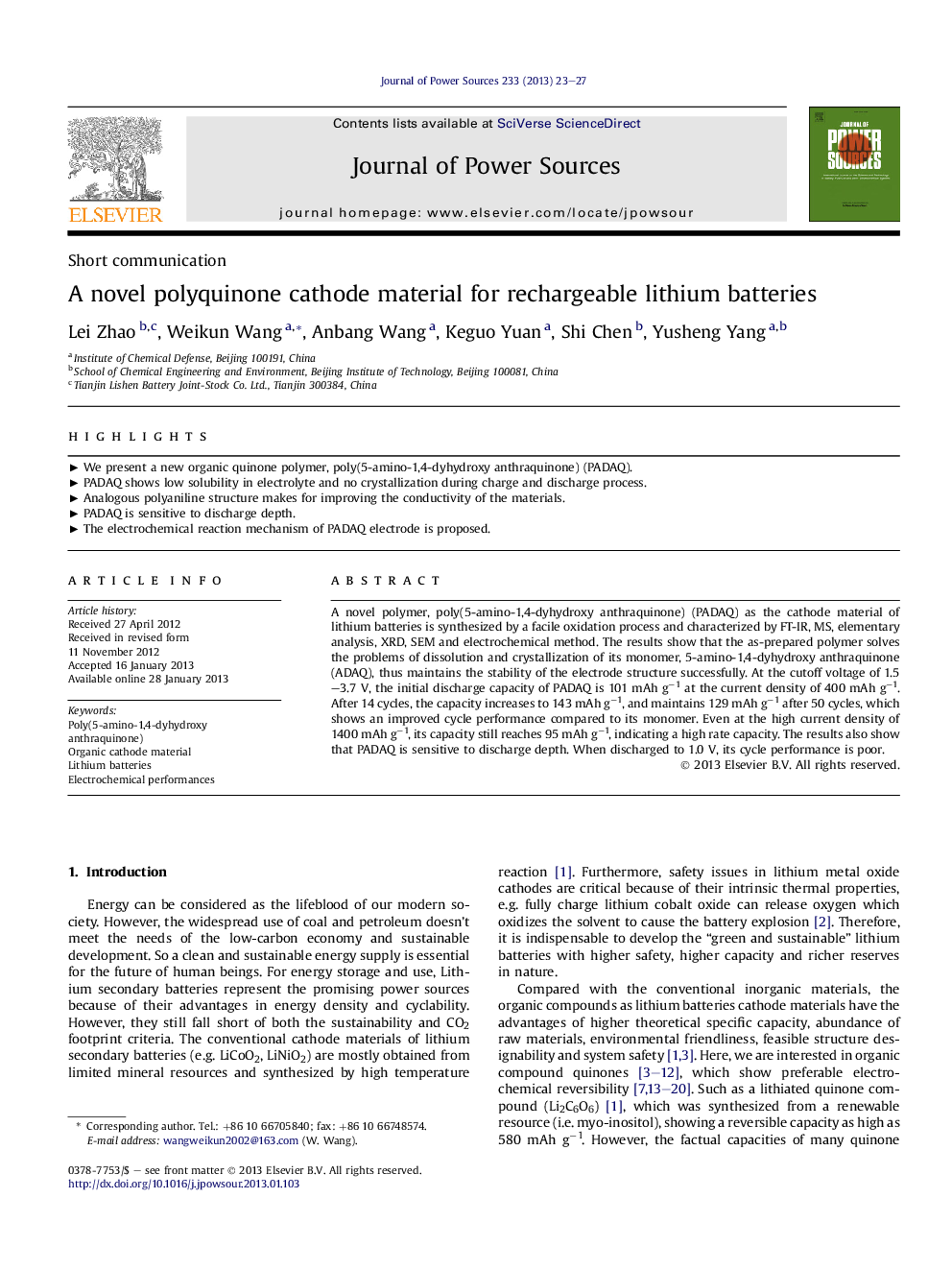| Article ID | Journal | Published Year | Pages | File Type |
|---|---|---|---|---|
| 1292977 | Journal of Power Sources | 2013 | 5 Pages |
A novel polymer, poly(5-amino-1,4-dyhydroxy anthraquinone) (PADAQ) as the cathode material of lithium batteries is synthesized by a facile oxidation process and characterized by FT-IR, MS, elementary analysis, XRD, SEM and electrochemical method. The results show that the as-prepared polymer solves the problems of dissolution and crystallization of its monomer, 5-amino-1,4-dyhydroxy anthraquinone (ADAQ), thus maintains the stability of the electrode structure successfully. At the cutoff voltage of 1.5–3.7 V, the initial discharge capacity of PADAQ is 101 mAh g−1 at the current density of 400 mAh g−1. After 14 cycles, the capacity increases to 143 mAh g−1, and maintains 129 mAh g−1 after 50 cycles, which shows an improved cycle performance compared to its monomer. Even at the high current density of 1400 mAh g−1, its capacity still reaches 95 mAh g−1, indicating a high rate capacity. The results also show that PADAQ is sensitive to discharge depth. When discharged to 1.0 V, its cycle performance is poor.
► We present a new organic quinone polymer, poly(5-amino-1,4-dyhydroxy anthraquinone) (PADAQ). ► PADAQ shows low solubility in electrolyte and no crystallization during charge and discharge process. ► Analogous polyaniline structure makes for improving the conductivity of the materials. ► PADAQ is sensitive to discharge depth. ► The electrochemical reaction mechanism of PADAQ electrode is proposed.
